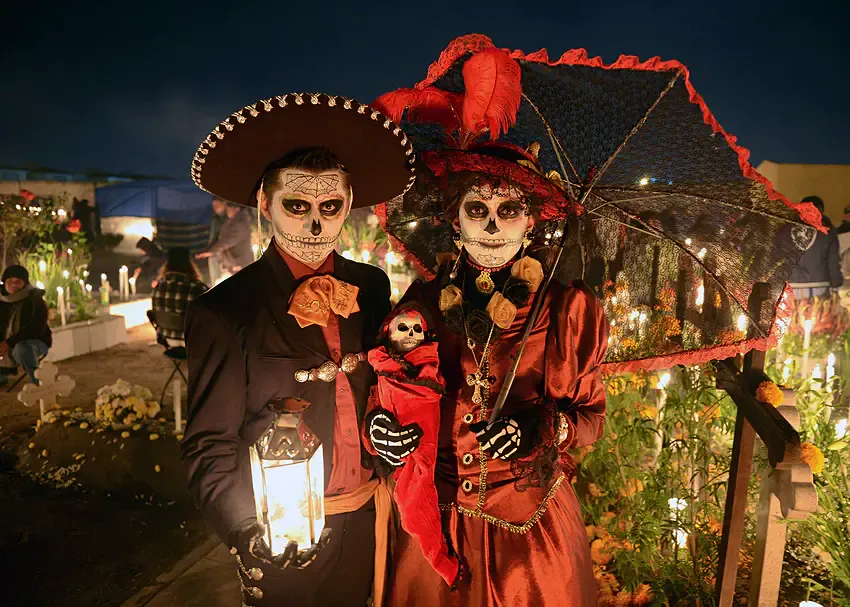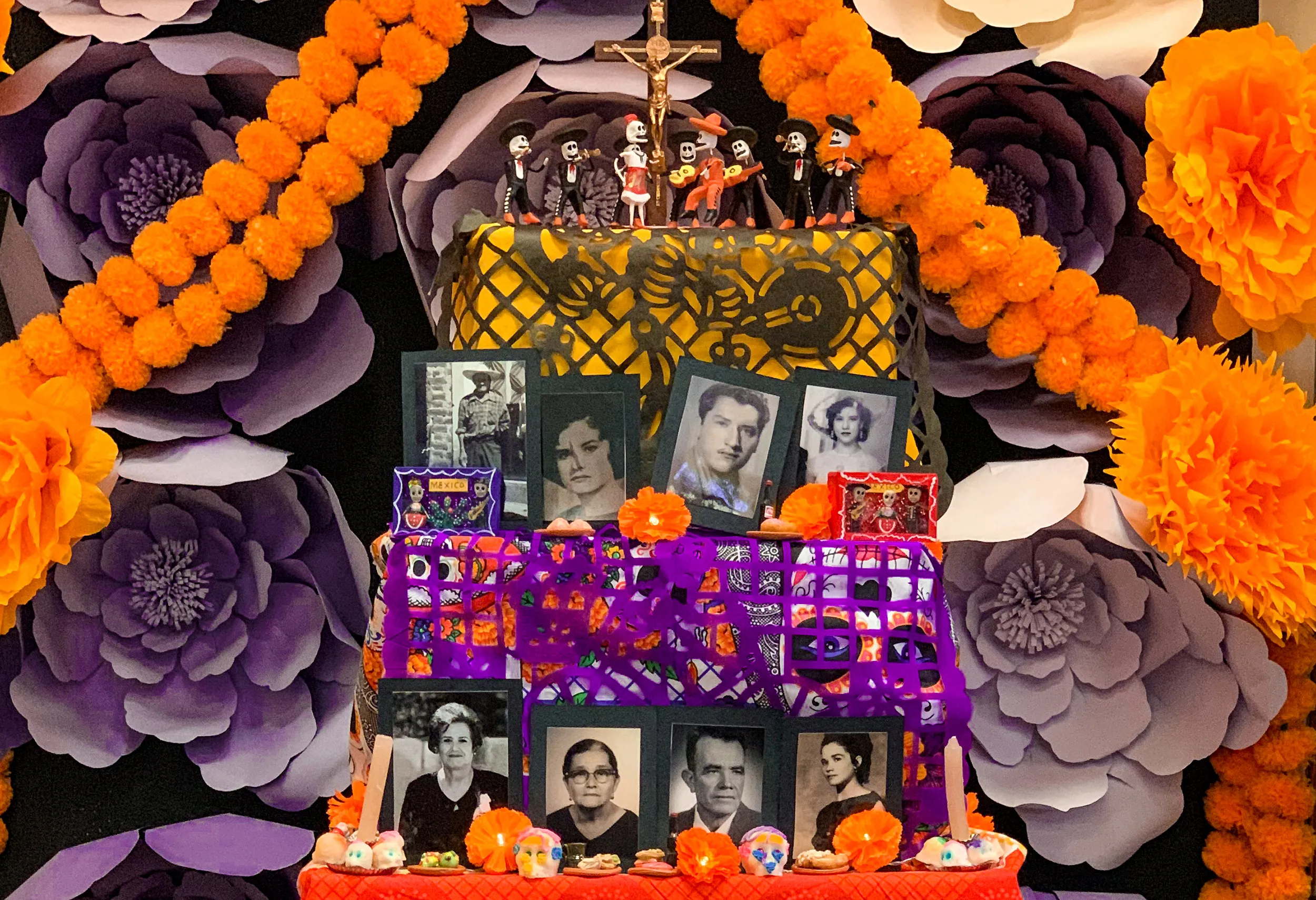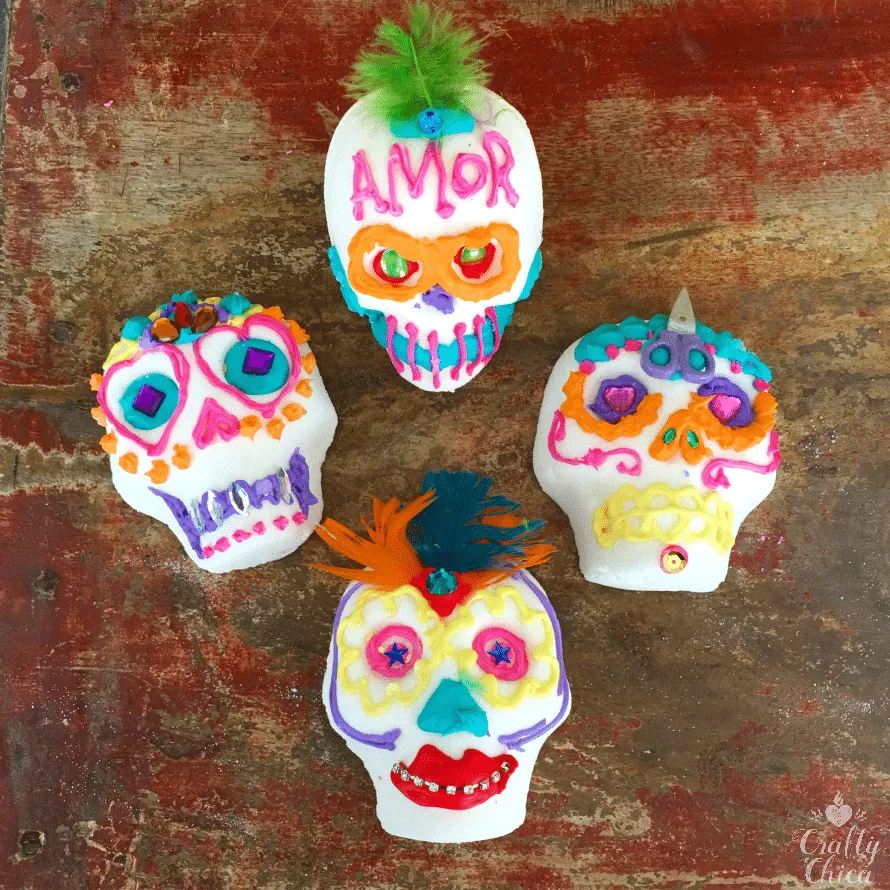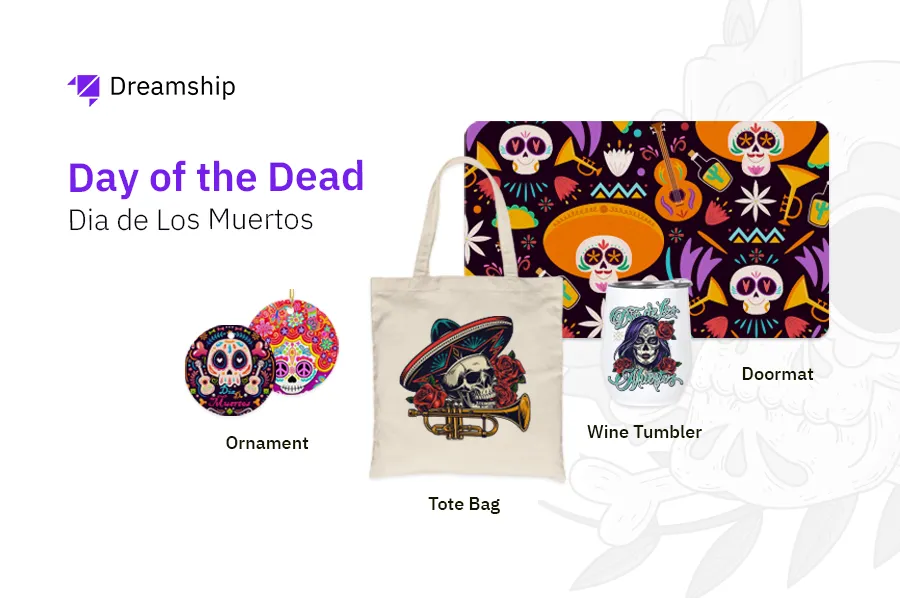Día de los Muertos (Day of the Dead) is more than just a time to remember loved ones; it’s a vibrant celebration of life, filled with color, music, and most importantly, food. From October 31st to November 2nd, Mexicans and Mexican-Americans worldwide gather to celebrate and remember, and food plays a central role. So, what dishes are essential to this unique holiday?
Food – The Soul of Día de los Muertos
Día de los Muertos isn’t a day of mourning but a celebration of life and death. Food holds a special significance, acting as a bridge between the living and the deceased. Dishes are meticulously prepared not only as offerings on ofrendas (altars) but also for families to share and reminisce about departed loved ones.

Pan de Muerto – Bread of the Dead
Pan de Muerto, or “bread of the dead,” is indispensable. This round bread, symbolizing the cycle of life, is adorned with bone-shaped dough strips and a round top knot representing a skull. Often flavored with orange zest and anise, each region in Mexico boasts unique recipes and decorations, adding to the bread’s diversity.

Sugar Skulls – Iconic Symbols of Remembrance
Sugar Skulls are emblematic of Día de los Muertos. These molded sugar creations are vibrantly decorated with colorful icing and intricate designs. More than decorations, they’re gifts for loved ones, symbolizing remembrance and honoring the deceased. Each skull often bears the name of a departed soul, a testament to enduring love and memory.

Tamales – A Traditional Mexican Delight
Tamales, a traditional Mexican dish, consist of corn dough (masa) filled with various ingredients like meat, cheese, or vegetables, wrapped in corn husks or banana leaves, and steamed. A staple during many Mexican holidays, including Día de los Muertos, they’re prepared in large quantities for ofrendas and sharing. Varieties abound, reflecting regional preferences and family traditions, including Tamales de pollo (chicken), Tamales de cerdo (pork), and Tamales de rajas (peppers and cheese).
Mole Negro – Rich and Complex Oaxacan Sauce
Mole Negro, a complex sauce from Oaxaca, Mexico, boasts over 30 ingredients, including chili peppers, spices, chocolate, nuts, and fruits. Its savory, sweet, and slightly bitter flavor profile complements chicken, pork, or turkey. The laborious preparation, often spanning several days, culminates in a unique and profound flavor essential to Día de los Muertos feasts.
Atole – A Warm and Comforting Drink
Atole, a warm corn-based drink, combines masa harina, water, sugar, and spices like vanilla or cinnamon. Its mild sweetness and comforting aroma make it a popular morning or evening beverage, especially during colder weather. Atole is a common offering on ofrendas and shared among celebrants during Día de los Muertos. Variations include Atole de chocolate (chocolate), Atole de fresa (strawberry), and Atole de arroz (rice).
Calaveras de Azúcar – Miniature Sugar Skull Candies
Calaveras de Azúcar, or sugar skull candies, are smaller, edible versions of Sugar Skulls, often made from sugar or chocolate. Decorated with bright colors and playful designs, they are given to children or used as ofrenda decorations.

Tequila and Mezcal – Traditional Spirits
Tequila and Mezcal, distilled from the agave plant, are customary drinks during Día de los Muertos, offered on ofrendas and shared among family and friends to remember the departed. Tequila is typically made from 100% blue agave, while Mezcal can utilize various agave species.
The Profound Meaning of Food in Día de los Muertos
Food transcends mere sustenance in Día de los Muertos, embodying deep cultural and spiritual significance. Offerings on ofrendas demonstrate reverence and remembrance for the deceased. Sharing these dishes fosters connection, strengthens family bonds, and provides a platform for sharing cherished memories. Día de los Muertos presents a unique opportunity to explore Mexican culture and cuisine. Participating in the festivities and savoring traditional dishes offers profound insights into the holiday’s meaning and values.
Conclusion
The foods of Día de los Muertos are more than just meals; they are symbols of remembrance, love, and connection across generations. Integral to the celebration, they contribute to the festive, warm, and colorful atmosphere. Experiencing these flavors offers a deeper understanding of Mexican culture and the profound human significance of Día de los Muertos.